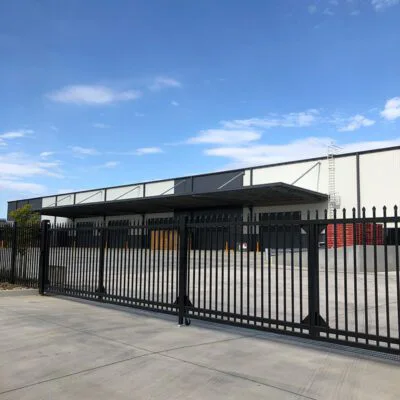
Installing temporary fencing is a critical step in ensuring site safety and regulatory compliance for any construction or event project. This guide offers detailed information on the proper installation and maintenance of welded mesh temporary fences, covering everything from safety guidelines to environmental considerations, and regulatory compliance to the versatility of the fences. Whether you are a construction company, event organizer, or temporary site manager, this guide provides valuable operational knowledge and practical tips.
1. Gather Your Tools and Materials
Before beginning, ensure you have all the necessary components:
– Welded Mesh Temporary Fence Panels
– Rubber Mallet
– Level
– Measuring Tape
2. Layout Planning
Measure and mark the perimeter where the fence will be installed. Plan the placement of the fence panels and bases to ensure even distribution and optimal stability.
3. Set Up the Fence Bases
Position the temporary fence bases along the marked line at intervals matching the width of your fence panels. These bases will stabilize the fence once erected.
4. Install the Panels
Insert the panels into the bases. Use a rubber mallet to gently tap the panels into place, thus ensuring they are vertical and secure. Use a level to check alignment.
5. Secure Panels with Clamps and Hinges
Attach the panels together at the top and bottom using temporary fence clamps. If your configuration requires gates, so install temporary fence hinges at the designated gate panels for easy access.
6. Reinforce with Panel Stays
For added stability, especially in windy conditions or on uneven ground, attach temporary fence panel stays to the panels. Position the stays at an angle and secure them to the ground if necessary.
7. Final Adjustments and Inspection
Walk along the fence line to ensure all panels are securely connected and the fence is stable. Adjust the clamps and stays as needed. Check that all bases are properly weighted or anchored.
– Efficiency in Setup: Assemble larger sections of the fence on the ground before lifting them into the bases to speed up the installation process.
– Enhancing Stability: Use multiple clamps at each panel junction and ensure panel stays are evenly distributed along the fence line.
– Regular Maintenance: Periodically check the stability and integrity of the fence, especially after weather events or heavy use.
When installing welded mesh temporary fences, safety is paramount. Ensure all personnel are equipped with the necessary protective gear:
– Gloves: Protect hands from sharp edges.
– Safety Glasses: Shield eyes from flying debris.
– Sturdy Boots: Prevent foot injuries from heavy materials.
– Provide comprehensive instructions on safely handling and assembling welded mesh panels. Emphasize the importance of using proper lifting techniques and teamwork to prevent accidents.
Using sustainable practices is crucial when installing temporary fencing:
– Eco-friendly Materials: Opt for materials that are recyclable and have minimal environmental impact.
– Installation Impact: Use techniques that avoid soil disruption and protect local flora. Suggest using ground mats in sensitive areas.
Stay compliant with local and national regulations:
– Understanding Regulations: Detail the zoning laws, safety codes, and environmental regulations that impact temporary fencing.
– Ensuring Compliance: Offer strategies to ensure all installations meet legal standards while helping avoid fines and legal issues.
Temporary fences should be adaptable to various needs and environments:
– Flexible Configurations: Explain how to configure fences in linear layouts, enclosed areas, or custom shapes to suit different site requirements.
– Adjustment Techniques: Provide guidance on adjusting fences for different uses, thus ensuring they remain functional and secure.
Regular maintenance is essential to ensure the longevity and stability of temporary fences. Inspect the fence regularly for any signs of damage or wear, and make repairs promptly to maintain structural integrity. In adverse weather conditions, so check the stability of the fence and reinforce it as necessary.
When the time comes to dismantle the temporary fencing, do so carefully to avoid damaging the panels. Organize and label all components for efficient storage and future reassembly. Store the panels in a dry, covered area to prevent rust and wear. Proper storage extends the life of the fencing and reduces replacement costs.
At FENCE DEPOT, we provide top-tier welded mesh temporary fences designed for quick installation and high durability. Our products, including innovative temporary fence bases and secure clamps, thus make us the preferred choice for temporary fencing needs across various industries.
By following the detailed steps and recommendations in this guide, you can ensure that the installation of your temporary fencing is both safe and efficient, while also meeting all relevant regulatory and environmental protection requirements. From selecting the right materials to regular maintenance, and eventually to disassembly and storage, each step is crucial in ensuring the functionality and durability of the fence. Applying these comprehensive strategies in practice will enhance the safety and convenience of your site, so ensuring the smooth progression of each project.